At the end of a very busy Day 2 of the Symposium, I sat down with my colleagues for a quick chat. After a while, one of them, who has been with the Association since 1995 told us how someone once asked him: ‘So if you look at the last 20 years, how has the world progressed to know more about MND, since there is still no cure to halt it?’. ‘Technology!’, he replied without hesitation. (Alright, he is a tech guy by occupation, so his opinion might be a bit biased, but he still proves the point I am trying to make).
Technology in the world of research has progressed incredibly far. From the ability to sequence the whole genome of a person in a fraction of the time (and price) that we were able to do a decade ago, to using delicate electrodes and sensors to explore what is happening inside our bodies.
Is telehealth the way to go?
Session 3B on the first day of the Symposium was dedicated to exploring how technology can improve patient care. Telehealth, a remote exchange of data between an individual and a healthcare professional to assist in the diagnosis and management of a condition, was the focus of the first two talks.
Ultimately, the goals of telehealth are to increase access to care for people, decrease the frequency of clinical visits and, as a nice addition to it all, to reduce clinical costs to the healthcare system. Dr Ray Dorsey from University of Rochester Medical Centre and his team have been investigating the use virtual appointments with people with chronic illnesses (such as Parkinson’s Disease or MND).
For people with reduced mobility who often rely on support from their carers, this could be a game changer – no prolonged waiting in the waiting rooms and hours spent commuting for short (but crucial) assessments. From the obtained data, the researchers also found out that a large proportion of people who already took part in this study also expressed higher satisfaction with the overall care they were given, while appreciating being in the comfort of their homes.
Building up on the topic of convenience of remote data collection was Dr Steve Perrin of the ALS Therapy Development Institute. He started his talk by reminding us all that, nowadays, there is a mobile app for pretty much everything – so why not use it to improve wellbeing of people living with MND.

He presented findings on their Precision Medicine Programme, which combines collection of data from a physician (such as full genome screen, blood and skin samples), and the patient (self-reported ALSFRS scores, tracking of movement from accelerometers, and voice recordings).
Their analyses already showed promise in mapping accelerometer data and voice samples submitted by people with MND to their corresponding ALSFRS scores, which gives hope that one day, patients will have the option to measure the progression of their disease using easy-to-collect biomarkers. And allowing people to manage their own health and help them understand what the data mean would make quite a difference.
Do you think it can’t get better than that?
Read my mind and help me move
The last of the sessions was slightly different from the rest. Dr Leigh Hochberg of Harvard Medicinal School showed us how, using a few (very smart and complicated!) sensors, it is possible to move a prosthetic limb, assisted wheelchair or a cursor on a computer without the need to use a single muscle in the body.
By simply thinking about movement, a sensor implanted to the motor areas of our brains can read and translate the signal that marks our intention to move and feed this into a connected device (eg a computer) – this smart technology is called brain-computer interface (or BCI for short). The ultimate goal would be to have a miniature device that could be implanted into the brain of patient and that would act as its extension.
I think it is safe to say that the next 20 years (and quite likely even less than that) are likely to enjoy another technology ‘boom’ and it is intriguing to guess what it will bring us.
Read more about improving wellbeing and quality of life on Symposium LIVE pages.
Abstracts of technology-related talks and posters:
Oral communications
Session 3B: Technology and ALS
C15 – Enhancing neurological care through telemedicine
C16 – Will telehealth revolutionize clinical care for ALS patients?
C17 – BrainGate: toward restoring communication and mobility
Poster presentations
Session: Multidisciplinary care and improving quality of life
MDC18: Patients’ perspectives of multidisciplinary home-based telehealth for amyotrophic lateral sclerosis
MDC19: MDC-19 Efficacy of teleBCI for training and engaging in braincomputer interface communication
MDC20: Brain computer-interface with P300-Speller: usability for disabled patients with amyotrophic lateral sclerosis
MDC21: Usability of eye tracking technology for increased communication aimed at patients with motor neuron disease

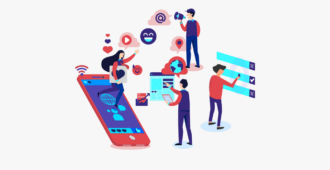
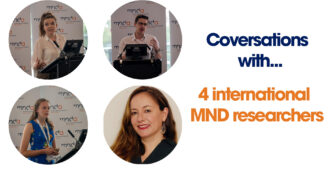
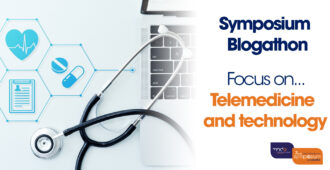
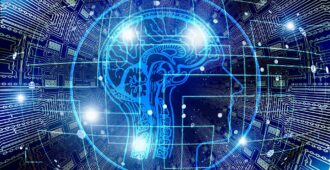
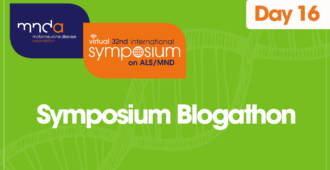
Hi please update for any new medicine for MND.
Dear Satish,
You can find more information about clinical trials and treatments in one of our Symposium update blogs.
Best Wishes,
Martina
Dear Mark,
While there are lots of research projects focusing on finding a treatment for MND, we also need to look at ways to improve collection of data and design of clinical trials to help us get ‘to the finish line’ faster. We also need to bear in mind the importance of improving wellbeing of people living with the disease, which is where technology can be very useful.
Best Wishes,
Martina